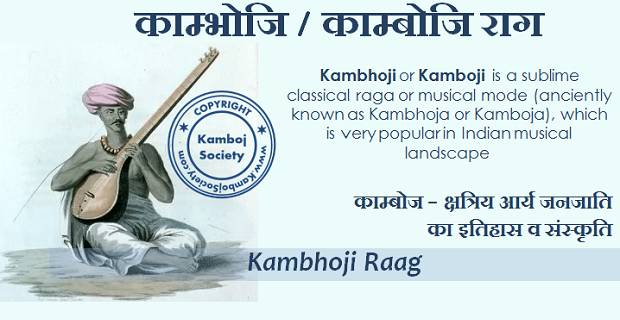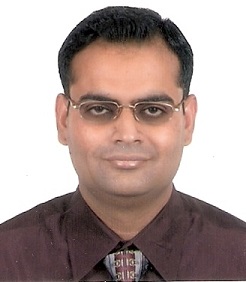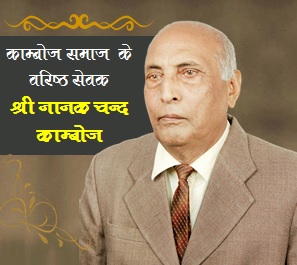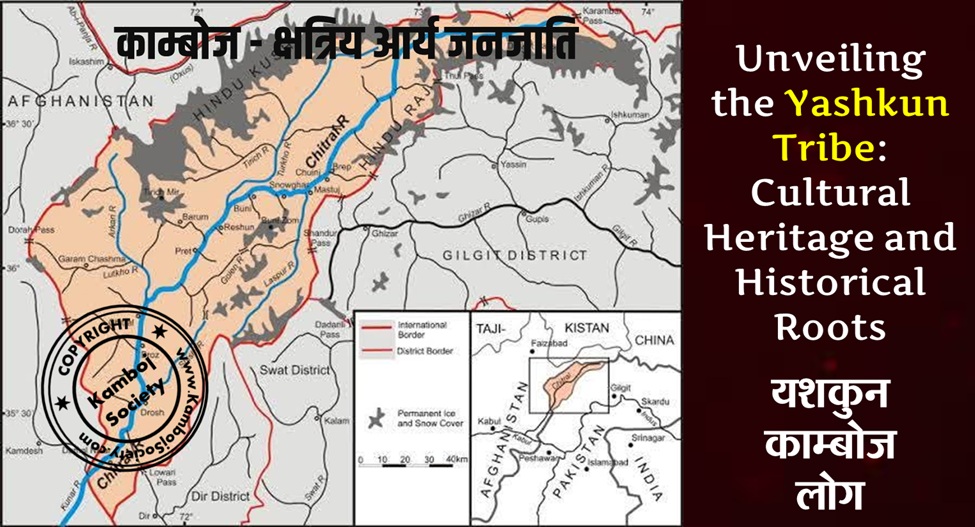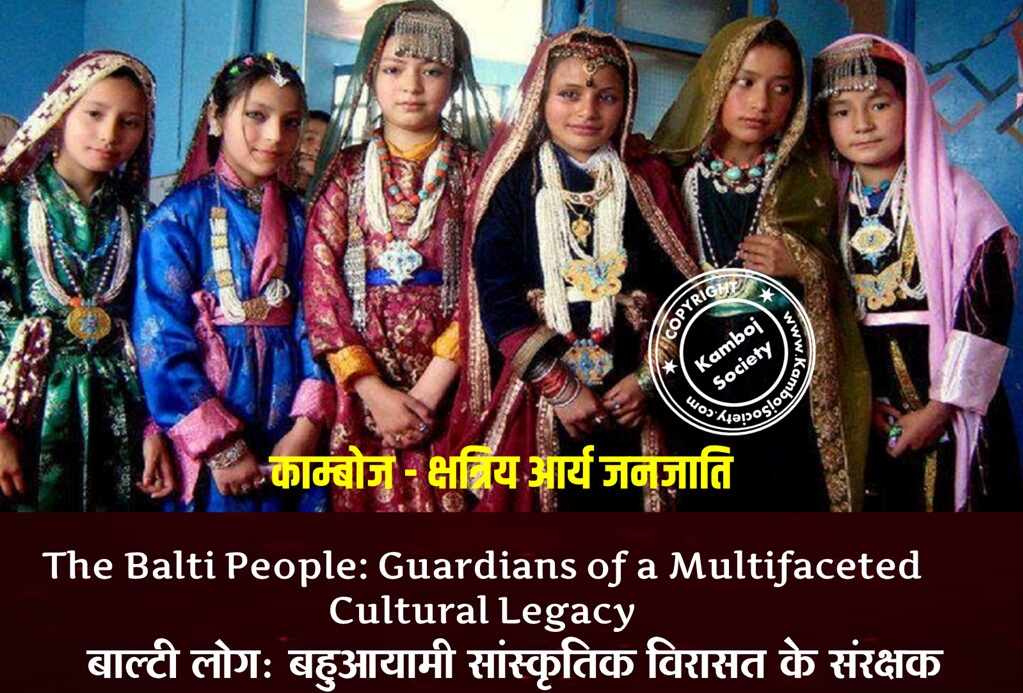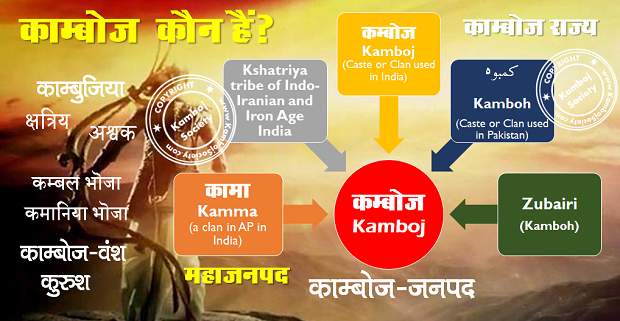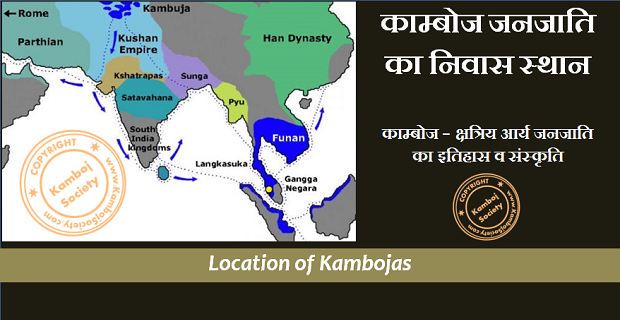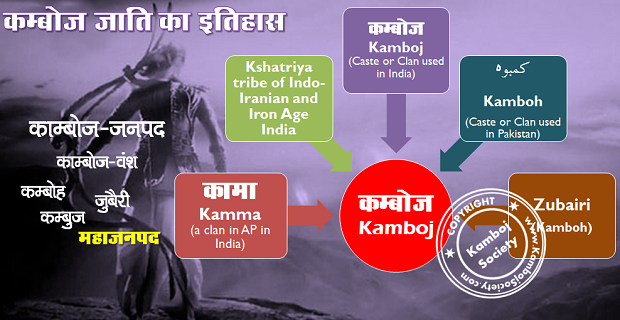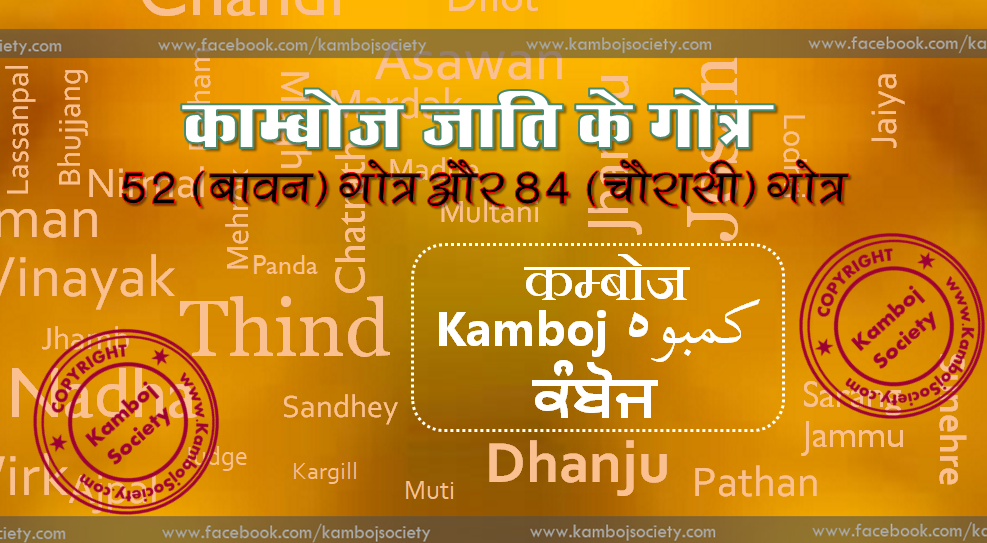Kambhoji or Kamboji or Kambodhi is a sublime classical raga or musical mode (anciently known as Kambhoja or Kamboja), which is very popular in Indian musical landscape It is known as Thakkesi pann in ancient Tamil music(3BCE) which is the oldest reference to this musical mode. Evidence exists that the ancient Kambojas were lovers of music. As a matter of fact, their free constitutions seem to have given rise to free philosophies. But philosophy, politics, and military training did not combine to develop a non-human type of humanity. Rather all ancient republics including those of the Kambojas were noted for their love of music, dance and art. Arrian Anabasis, IV.3. calls these ancient Republicanism|republicans from north-west whom Alexander the Great|Alexander had met as Lovers of music and dance. Invasion of Alexander, p 136, Dr J. W. McCrindle; Hindu Polity, Part I & II, 1978, p 74, Dr K. P. Jayswal: Every nation regards the singing and dancing of every foreign nation as wild. It is true now; it was true 23 centuries ago. Kautilya's Arthashastra Arathashastra Ch XI, p 376, Trans. Dr. Shamasastry also supposes disputation on science (vidya) and art (silpa) to be well known weakness in these (nort-western) republics.
Mediaeval era references to Kamboji or Kambhoji
There are numerous references to Raga or Ragini called Kamboji or Kambhoji in ancient Indian music|musical traditions. Narada's Sangita Makarand (7th to 8th century AD) broadly classifies Ragas into eight subsets and includes three raginis in each subset. In this scheme of classification, Narda accepts raga Kamboji as a mode of Shri raga, the first subset of his scheme of classification Ragas and Raginis, Appendix 4, pp 179-80, O.P Ganguli. Ramaditya, the author of Swara-Mela Kalanidhi (1550 AD) has accepted 20 melas and has accommodated 64 Jana-ragas among the melas. In this scheme of classification, the twentieth mela is Kambhoji under which come the Jana-ragas like Kambhoji. Ibid., Appendix 17, pp 197-98, O.P Ganguli Ragamala of Pundrikavitthala classifies ragas into six divisions with each group having several raginis and ragas imagined to be their spouses and sons. Thus the ragini Kambhoji is assumed to be one among the several spouses of raga Nat-Narayana Ibid., Appendix 18, pp 199-200, O.P Ganguli. Chatravarishach.chhat-Raga Nirupanam authored by Narada (1525-50 AD) lists ten main ragas and accepts the Kambhoji as the spouse of seventh raga called Raga Nata-Narayana. Ibid., Appendix 19, pp 201-04, O.P Ganguli. Chaturdandi-Prakashhika authored by Vyankatmakhi (also known as Vyankateshwara Dikshit, ~1660 AD) assumes 19 melas and lists the Kamboji, Kedar-gaula and Narayan-gaula as the Jana ragas under mela Kambhoji Ibid., Appendix 24, p 209, O. P. Ganguli.. The Anupa-Sangit-Ratanakar by Sangit Acharya Bhava-Bhata lists 20 ragas as being foundamental ragas. The third raga of his scheme, called Kedar Raga, includes more than a dozen of raginis----the seventh being the well known Kambhoji Ibid, Appendix 26, p 211, O. P. Ganguli. Raja Tulaji, the ruler of Tanjore (1763-87 AD) has written a well known book on musicology known as Sangit-Saramritoddhar. Raja Tulaji assumes 21 Janakmelas and includes Kambhoji and Yadukul-Kambhoji as the Jana ragas under the eighth Janaka-mela of his scheme of classification. Ibid., Appendix 26, p 213, O.P. Ganguli
Matanga's ancient reference to raga Kamboji
It is noticeable that most of the references presented above are comparatively recent but this fact should not be taken to mean that raga Kambhoji is also of recent origin. Brihaddesi authored by Sangit Acharya Matanga Muni (500-700 AD) is the most important work between Natyashastra (2nd century BC) and Sangita Makarand (7th to 8th century AD) Ibid., pp 16-18, O. P. Ganguli. Sage Matanga probably hailed from south India. This Brihaddesi work is dated between 5th and 7th century AD but unfortunately it is incomplete. Portions of it appear to have lost down the road. Matanga's Brihaddeshi is the first major and available text to describe the Ragas as we understand them today. Sangit Acharya Matanga informs us that "a classical melody (Raga) can not be composed of four notes or less. But the melodies used by the tribes such as the Sabara, Pulinda, Kamboja, Vanga, Kirata, Bahlika|Vahlika, Andhra, Dravida and the Vanachra (forest dwelling) clans or tribes are an exception which contain four svaras or notes"See also: Folk-lore, p 63. A CRITICAL ANALYSIS OF RAGA-RASA RELATIONSHIP, p 18, Mohammad Zafar Iqbal, online article - sanjannagar.org..
See the evidence below:This evidence by Sangit Acharya Matanga indisputably attests the existence of Kamboji Raga before 5th/6th century AD.
Origin of raga Kamboji or Kambhoji
Now, raga Kambhoji is stated to be deshi raga and a jana raga. According to ancient references, the name of deshi ragas originated from the name of the countries or deshas (of their origin). The author of Sangit-Ratnavali also attests that:
Encyclopedia Britannica also observes: "The author of the Brihaddeshi claims to be the first to discuss the term raga in any detail. The ragas of this period seem to have been named after the different peoples (janas) living in various parts of the country, suggesting that their (ragas') origin might lie in (regional) folk music"
cf: "One of Sage Matanga's major contributions to musicology is his scholarly focus on the regional element in music. 'Deshi' has to be understood in contrast to 'Margi' music, which is sacred and pan-Indian in its scope. According to Matanga, "Deshi is that which is sung voluntarily and with delight and pleasure by women, children, cowherds and kings in their respective regions". Deshi music captured the flavour of a range of human emotions from different regions (i.e. Deshas/Povinces/Countries)".Narada, the author of Sangit-Makarand also hints on the uniqueness of the raga-nomenclaturing. On close study of Narada's Sangit Makrand, one learns of three distinct stages on the nomenclaturing of the Indian ragas.
- Stage one refers the time frame relates to Bharata's Natyashastra (2nd century BC). It is the stage of raga-nomenclaturing when the ragas were named after the saliant swara of the ragas. For example, after Shadaj swara, originated the name of the Raga called shadaji; after Arishabh swara originated the name of Aasharbhi Raga; and after Gandhari swara was named the Gaandhari Raga, the last one being still in currency.
- In the second stage, the Ragas were named after different jana (tribes or the clans) dwelling in different geographical locations. For example, after Shaka tribe was named Shakatilak Raga or Shakamishrat variants of Shaka Raga; after Pulinda tribe was named the Pulinda Raga; after Abhira clan was named Abhiri Raga; after Shavara tribe was named Saviri or Saverka. Similarly after Malava, Andhra, Gurjar, Kambhoja (Kamboja) tribes were named Ragas Malvika, Andhrri, Gurjari and Kambhoji (Kamboji) respectively, with all their variants.
- In the third stage, the ragas were named after the janapada or desha or country of their origin. For example, after Bengal was named Bangal-Raga; after Sindhudesha was named Saindhvi Raga; after Sauvira Janapada was named Sauviri or Sauvirak Raga; after Saurashtra was named the Saurashtri (or Sorathi or Surat or Surat-malar); and after Karnata janapada was named Karnati Raga etc. Similarly, the Kambhoji Raga or Ragini which is now very popular in southern India was named after the Kambhoja janapada. Scholars believe that the Kambhoji raga or ragini had probably originated in the jana rather than the janapada stage.Ancient Kamboja People and the Country, 1981, p 233, Dr J. L. Kamboj, cf: Ragas and Raginis, pp 72-77, O. P. Ganguli, The Kambojas Through the Ages, 2005, p 94, S Kirpal Singh. This implies that the basic tune of raga Kamboji or Kambhoji must have evolved during Epic Age|epic or even pre-epic times.
Classification according to Gender
Sangit-Makrand also classifies the ragas according to their gender i.e Male Ragas, Female Ragas (i.e. Raginis) and Neuter Ragas. According to Narada, the Male Ragas depict emotions of Raudra (anger), Veera (heroic) and Bhayanaka (fearful); the Female Ragas represent sentiments of Shringara (romantic and erotic), Hasya (humorous) and Karuna (pathetic); while the Neuter Ragas represent emotions of Vibhatsa (disgustful), Adbhuta (amazement) and Shanta (peaceful).
Each raga is principally dominated by one of these nine rasas or sentiments, although the performer can also bring out other emotions in a less prominent way. The more closely the notes of a raga conform to the expression of one single idea or emotion, the more overwhelming the effect of the raga.
Since the Raga Kambhoji or Kamboji has been classified as Female Raga (i.e. Ragini), this Raga is particularly suitable in conveying the sentiments of Shringara (romantic and erotic), Hasya (humorous) and Karuna (pathos).
Basic Kamboji tune enters Indian mainland
From the foregoing discussion we clearly notice that raga or ragini Kambhoji (or Kamboji) which is now extremely popular in southern India was connected, in its original or basic form, with Kamboja or Kambhoja land. It had originated in the ancient Kamboja jana or janapada located in north-west India. It is very difficult to speak with confidence about the period when this basic Kambhoji tune had first entered Indian mainland. It is highly probable, though, that when the Kambojas|Kamboja, Sakas|Saka, Yavana, Pahlava and Rishika tribes had entered Indian mainland during second/first century BCE and spread into Sindhu, Sovira|Sauvira, Rajasthan, Punjab (India)|Punjab, Gujarat and southern India, the Kambojas might have carried the basic Kamboji (or Kambhoji) tune into these regionsAncient Kamboja, People and the Country, 1981, p 234, Dr J. L. Kamboj. Or alternatively, the wandering Indian musicians & minstrels travelling through various regions of the north-west might have heard of the Kambhoji, adopted its basic tune and modified & evolved it further. Thus, we see that there are various forms of this ancient raga prevalent in the north, western and southern India.
For Migration of Kambojas to SW/Southern India, see: [https://en.wikipedia.org/wiki/Migration_of_Kambojas#The_Kambojas_in_West.2FSouthwest_India]Variants of Kamboji or Kambhoji
Kamboji is a sort of parent scale (mode) much like Bilawal or Kalyan. According to some writers,
“Kambhoji is a sort of parent scale (mode) much like Bilawal or Kalyan. It is one of the earliest known modes dating back to the Samaveda and its original name was Harikambhoji. In the south it is now called Kambhoji while in the north it is also known as Khambaj”(ref: P. J. Narayanan, rec.music.indian.classical) @ LINK [https://www.musicalnirvana.com/index.html]. it is one of the earliest known modes dating back to the Samaveda and its original name was Kamboja described by Matanga (400-500 AD). Later authors refer to it variously as Kambhoji, Kambodi, Kambhodi, Khambodi, Khambhodi, Kamodi, Kamoda, Khambaj (also Khamaj or Khamach) etc etc. In the south it is now variously called Kambhodi, Khambhodi, Kambhoji, Khambhoji, Kambhojika etc while in the north it is also known as Kamboji, Khambaj or Khamajcf: P. J. Narayanan, rec.music.indian.classical; See also: Rasa, Raga-Mala and Performance Times in North Indian Ragas, W Kaufmann - Ethnomusicology, 1965 - JSTOR.. Linguistically, the names Kambodi, Khambodi and Khambaj (or Khamaj, Khamach) can all be derived from Kamboji, Kamboja or Kambhojika For Khamaj = Kamboji/Kambhoji or Kambhojika, see also: Rasa, Raga-Mala and Performance Times in North Indian Ragas Ethnomusicology, Vol. 9, No. 3 (Sep., 1965), pp. 272-291, Walter Kaufmann. For Kamboji/Kambhoji or Kambhojika = Kamodi, Kamoda, Kambodi etc, See: A Study on the Sri K???a Lilam?ta? of Poet Nityananda – 1983, P 184, Banama?i Ratha, Nityananda..One critic remarks cryptically that raga Khamaj not only turns flower red with passion, but also makes the antelopes musty. Khamaj is still a popular and sensual raga, which is performed mainly in thumri and other genres, including hori-dhamar. [https://www.musicalnirvana.com/index.html].
Other related raga is Khambavati, said to be connected with the port of Kambavati (or Cambay), southern Gujarat. Place name Cambay or Kambati, Khambati or Kambavati is said to be connected with ancient Kambojas Commenting on name Kamboja, Dr H. H. Wilson says that we have part of the name Kamboja i.e. Kambi, in the Cambistholi of Arrian (Archosia): the last two syllables, no doubt, represent the Sanscrit Sthala, Sthana or 'place…. and the word denotes the dwellers in the Kamba or Kambis country: so the Kámbojas may be explained those born in Kamba or Kambas. (See: Vishnu Purana, p 194, fn 146, Dr H. H. Wilson). Similarly, the name Khambavati, Kambhavati or Kambavati means the residence of Kamba/Kambha (-vati means = Pura = residence).. There are numerous scholars who have connected syllable Kambi or Kamba of Kambhavati with the Kambojas of north-west see: Glossary of tribes, pp 443-444, H. A. Rose; The Kambojas Through the Ages, 2005, p 416, S Kirpal Singh; Vanger Jatya Itihaas, (Bangla), Rajyakanda, Nagendra Nath; Epigraphia Indica, XXIV, pp 45-46; See entry at Kamboh: Punjabi Mahankosh, Bhai Kahn Singh Nabha; Ancient Kamboja, People and the Country, 1981, p 332, Dr J. L. Kamboj cf: Arabian name "Kambaya" stands for Cambay; Kambaet; Khambat;Khambayat; Khambavati (See: Die Reise des Arabers Ibn Batuta durch Indien und China(14. Jahrhundert), 1911, p 471, Ibn Batuta); See also entry for Camaby in Hobson-Jobson: a glossary of colloquial Anglo-Indian words and phrases, and of kindred terms..., 1903, Henry Yule, A. C. (Arthur Coke) Burnell, William Crooke. cf: Ancient name of Cambay (Khambat) was Kamboj (i.e Kamboja) (Asiatick Researches: Or, Transactions of the Society Instituted in Bengal, for Inquiring Into the... 1801, p 129, Asiatic Society (Calcutta, India). cf: A trtace of their (i.e Kambojas') settlement in Saurashtra/Gujarat still survives in the name of Cambay (see: Journal of the Royal Asiatic Society of Great Britain and Ireland, p 232, Royal Asiatic Society of Great Britain and Ireland. The ancient name of Camaby in Gujarat was Kambhoj (See: Sharad Keskar's notes on Kim, Chapter XI, Macmillan Uniform Edition, 1901, Rudyard Kipling).. There was place name called Kambhavati in Maharashtra also. Obviously, this name Khambavati is also a modified form of ancient tribal name Kamboja and may have been connected with the ancient Kambojas.
Raga Khambavati is commonly portrayed as a lady worshipping the four-headed Brahma by performing an ancient fire ritual. For Kamboja connection with Saurashtra/Gujarat, See the link: [https://en.wikipedia.org/wiki/Migration_of_Kambojas#The_Kambojas_in_West.2FSouthwest_India]
In Punjab (India)|Punjab and northern India, the variant of Kambhoji is also called Kamodi or Kamoda. The raga is also referenced as such in Sri Guru Granth Sahib (S.G.G.S), the Shabad Guru of the Sikhs SGGS page 1430-10: gaavahi saras basant Kamodaa. (Trans: and the thrilling songs of raga Basant and Kamodaa); (SGGS page 1430-11: Kamodee a-o goojree sang deepak kay thaap. (Trans: Kamodee and Goojaree accompany deepak). See Also Punjabi Mahankosh, p 1038, Bhai Kahn Singh Nabha.
Besides the above version of Kambhoji, the other forms like Hari-Kamboji (Hari-Kambhoji), Yadukula-Kamboji (Yadukula-Kambhoji), Dombuli-Kamboji (Dombuli-Kambhoji), Gopi-Kamboji (Gopi-Kambhoji) and Senchu or Chencho-Kamboji (Chencho-Kambhoji), Erugala-Kambhoji, Siva Kamboji (Siva Kambhoji) etc are also in currency.Sanskrit Kamboja vs Cambodia and the raga Kambhoji
It is often stated by some writers that ancient Sanskrit name Kamboja refers to Cambodia. This is not true. The earliest attestation of term Kambuja for Cambodia appears in the Baksei Chamkron Inscriptions of Cambodia date 869 AD. But the Kamboja country and people located in north-west India as referred to in our ancient Sanskrit texts go back to remote antiquity.
Based on the similar misconception, some people also attribute the origin of raga Kamboji (or Kamboji) to Cambodia e.g., write Sinha and Ludwik: "Kamboji may hint at Cambodia" (See: Ludwik Sterbach Falicitation Volume, by J. P Sinha, Ludwik Sternbach).. This again is wrong. Raga Kamboji being a jana raga is now believed by numerous scholars to have originated during the jana (tribal) stage which stage had preceded the janapada stage in India|Indian history. Thus basic tune of raga Kamboji or Kambhoji must have originated in the Epic Age|epic stage which had preceded the Buddhist period. On the contrary, the Indian colonisation of Kambuja had occurred not earlier than 5th century ADE. Hence it is wrong to assume that raga Kamboja or Kambhoji had originated in Kambuja or Cambodia and it got its name from that country.
Here are some opinions from the scholars.
Scholars like O. P. Ganguli and Dr J. L. Kamboj believe that the Kambhoji raga or ragini had originated in the jana rather than the janapada stage Ancient Kamboja People and the Country, 1981, p 233, Dr J. L. Kamboj, cf: Ragas and Raginis, pp 72-77, O. P. Ganguli, The Kambojas Through the Ages, 2005, p 94, S Kirpal Singh. This implies that the basic tune of Kamboji or Kambhoji must have evolved during epic or even in pre-epic times. Hence its origin must be attributed to the ancient Kamboja jana and janapada known to have been located in north-east Afghanistan.
Dr V. V. Srivatsa wrote the following in his notes on Raga Surati:
"The names of some ragas are indicative of the region from where they originated, e.g., raga Kambhoji from Kambhoja desha (Cambodia), Gurjari from Gujara desha (N.W.F.P.), Sindhubhairavi from Sindh, Malavi from Malwa etc" See Notes on Raga Suratii, by Dr. V V SRIVATSA, CAC Newsletter.But a little later, Dr V. V. Srivatsa wrote the following in his notes on Raga Yadukula-Kambhoji:
"Names of some ragas indicate the region of their origin. Examples are Gurjari, Malavi, Kannada Gowla, Gowda Mallar, Sindhubhairavi and some others. Even in one raga, different versions can be found in different regions, as can be visualised from names like Kannada Gurjari, Dravida Gurjari etc. Bharat, our land, comprised 56 confederation in days bygone, one of which was the territory Kambhoji. The raga that originated here was Kambhoji". (See Notes on Yadukula-Kambhoji, by Dr. V V Srivatsa, CAC Newsletter) [https://www.carnatica.net/newsletter/ykambhojinewsletter.htm].
It needs to be remembered here that the Purana|Puranic list of 56 countries of the Bhuvana-kosha spanned seven divisions of ancient Indian subcontinent. The Uttarapatha was one of these seven divisions and had extended from Pehova in Haryana to as far as deep into the Central Asia. The Kamboja was one of the Bhuvana-kosha countries and it adjoined the Daradas, Chinas, Tusharas, Pahlavas, Shakas etc which were all included in the Uttarapatha division.W. Kirfel's text of the Uttarapatha countries of the Bhuvankosha, p 44, Also: Markendeya Purana (57.32-58); Brahamanda Purana (1/16.60-69); Matsya Purana (114.34-57); Vayu Purana (45.109-137); Brahama Purana (27.4-70); Vamana Purana (13.36-58) etc This shows that Kambhoja|Kambhoji of Dr V. V. Srivatsa refers to the Kamboja of Uttarapatha located between river Kabol and the Hindukush mountain ranges.
It is therefore, fair that Dr Srivatsa had soon corrected his mistake.
Shri Chandrasekarendra Saraswati, Paramacharya of Kanchi has given his scholarly views on the origin of raga Kambhoji. And he correctly connects it with north-western Kamboja rather than with Cambodia. "Then why the name 'Kambhoji'? "I have a thought here - there is another place called 'Kambhojam along India's northern border. Kalidasa, no ordinary poet and quite knowledgeable too, tells Yasha to go this way and that in his 'mEgha SandEsam' - good enough to plot a map! In his Raghuvamsam, describing Raghu's invasions and victories, he has mentioned one 'Kambhojam', beyond the Indus and along the Himalayas. From this, we deduce that, within the extended India (akand Bharat), there was one Kambhojam near the Hindukush mountains. May be our Kambodhi raga was from this place? "Many ragas are named after places, right? Sourashtram, Navarasa kannada, even Kannada, Sindhu Bhairavi, Yamuna Kalyani, like this Kambodhi might have come from Kambhojam region." (Sri Chandrasekarendra Saraswati) [https://www.carnaticcorner.com/articles/srisubramanya_translated.htm] Cf: "However, its child Kaambhoji is much more popular among performers and the raga Is supposed to have originated In the Kambhoja region of ancient India" (Article 280 of rec.music.indian.classical: Newsgroups: rec.music ). [https://www.google.com/search?hl=en&lr=&q=Kaambhoji++kambhoja&btnG=Search] . Kambodhi or Kambhoji origin from north-west Kambhoja'' (Discussion Forum) [https://www.forumhub.mayyam.com/hub/viewtopic.php?p=166498]
Another noted musicologist from Carnatica, Shri P. P. Narayanaswami, also rejects the Kambhoji connection with Cambodia. Rather he likes to connect it with the Indian Kamboja located in north or north-west of India. His views on the precise location of Kamboja however seem to be in little error. "What is the origin of the name kAmbhOji? Did it derive from Cambodia (kampucia), where there was a flourishing Hinduism during the 13th century (the famous Vishnu temple at Angkor)? The first ever mention of the location "KAmbhOja" appears in the vaMsha brAhmaNa of the sAma vEdam, where the Rsi "Aupamanyava kAmbhOja" is mentioned. Mahabharatam (udyOga paRvam 4/15, and sAnti paRvam 207/43) mentions kAMbhOja giving the location as “uttara patha” (norrthern region). Ramayana (bAlakANdam 6/22, kiSkindA kANDAm 43/11-12) refer to a region called "kAmbhOja", again located in the north-west region. Also, we find this geographical name mentioned in various sanskrit kAvyams of the Kalidasa era. In Raghuvamsam, there is a reference to a kAmbhoja ruler whom Raghu conquered (4th sargam verse 69). It is quite possible that some location near ayOdhya might be the "kAmbhOja" region" (P. P. Narayanaswami). [https://carnatica.net/special/kambhoji-ppn.htm] Also Cf: "For instance, Chencho Kambhoji was indicative of its relation to the Chenchus tribe of Andhra Pradesh which lived around the Kamboja area," Prof. Prasad. [https://www.the-south-asian.com/August2003/ancient_musical_instruments_of_india_1.htm]
According to Amir Khusrau Memorial Valume (1975), in olden days the regions or Desh formed independent cultural entities. The Gandhara and Kamboja lay beyond the western borders, Multan and Delhi in the west, Mithila and Gauda in the east, Ujjain and Malwa|Malava on the road to south, Gurjar Desh by the sea and Simhala Desh and Karanata in the south. In these various regions arose regional tunes the most prominent and enduring among them were Gandhari, Kamboji, Multani, Gauda, Malava Pancam, Gurjari etc.... Tune 'Ghara' came from Ghore (Afghanistan) in the wake of Kamboji = Khammaj/Khamach.. See: Amir Khusrau: Memorial Volume, 1975, P 35, 56, Amir Khusraw Dihlavi.. This reference also relates the Kamboji to northwest Kambojas rather than Cambodia.
Uma Prasad Thapliyal writes: "The Scythians contributed three melodies to Indian Raga System viz: Saka Raga, Saka Tilaka and Saka Mishrita. Saka Raga was a melody known as Sadharana Giti. Saka Misrv and Kamboji were allied with the Kukuva Raga indicating thereby the foreign antecedents of the latter. Raga Kamboji, of course, was contributed by the Kambojas |Kamboja people. Kamboji is mentioned along with the Saka-Misrita..." Foreign Elements in Ancient Indian Society, 2nd Century BC to 7th Century AD, 1979, p 154-55, Uma Prasad Thapliyal . It is also important to note that the same author locates the Kambojas and Sakas in the north-west division.
Front ranking Indian historian, Dr Romila Thapar, while writing on the Barbarians of north-west, also refers to the respective melodies or tunes of the Gandharas, Kambojas and the Sakas etc Image of the Barbarinas in Early India, Comparative Study & History, Vol 13, No 4, Oct 1971, p 408-436, Dr Romila Thapar..
Sheldon Pollock also observes that the musical compositions were produced in the Kamboja, Saka and Nagna countries or their various regions The Language of the Gods in the World of Men;, Sanskrit Culture, amd Power in Pre-Mauryan India, Ch 8, p 299; Sheldon Pollock.. Again, these Kambojas, Sakas of Sheldon Pollock's reference belonged to north-west and not to south-east Asia.
Numerous instances like the above from scholars can be presented here who now rightly accept that raga Kamboji or Kambhoji, which is a deshi as well as a jana raga, had originated in the Kamboja janapada located in north-west India. This is the same Kamboja janapada which finds numerous references in a host of ancient Sanskrit and Pali texts and in numerous ancient inscriptions including those of Mauryan king Ashoka. Therefore, the name should not be connected with Kambuja (Cambodia) of South-East Asia which name is of belated origin, much later than the attested origin of Raga Kamboji.
Concluding remarks
The Kamboji or Kambhoji (and its variants like Khamaj) is indeed a majestic raga-- majestic in its regal attire, its royal gait, sublime moods, enriching in charms, of heart-soothing melody and of sensuous glamors. It is considered a superb raga-- the glorious and splendrous, and is employed for conveying or expressing the Karuna Rasa (finer sentiments of tenderness, pathos), Haas Rasa (finer sentiments of humor) and Shangaar Rasa (finer sentiments of love, ornamentation and glamour etc). It is accepted by Sangeet Acharyas as a great gift from ancient Kambojas to the world of music. Kamboja|Kambhoji is recommended to be best played at early parts of night or early morning hours
- Sangitacharya Pundrikavitthala, the author of Ragamala and Shadraga-Chandodiya recommends raga Kambhoji to be played in early parts of the night or early morning (See: Ancient Kamboja, People and the Country, 1981, p 233, Dr J. L. Kamboj).
- Cf: "Kamboji is an old raga that is sung in the first part of the night"
- Cf: "..Kamboji and Nilambari at night are considered suitable Cf also: The correct time to play this raga is the first quarter of the night. The mood created evokes memories of joy, contentment, hope, and desire as expressed in the 'Siva-tattva-ratnakara' Siva.tattva.ratnakara 6.8.99.: "A lovely girl in the flower of youth, robed in yellow, Kambojika|Kambhojika A maiden from Kambhoja or Kamboja of the beautiful hair, searching everywhere in the forest with her maids, the thought of her lover makes her weep with tenderness!"
It is considered an auspicious raga.
Books and Magazines
- Ragas and Raginis, O. P. Ganguli
- Amir Khusrau: Memorial Volume, 1975, p 35, Amir Khusraw Dihlavi.
- Ancient Kamboja, People and the Country, 1981, Dr J. L. kamboj
- The Kambojas Through the Ages, 2005, S Kirpal Singh.
- Kamboj Itihaas, 1972, H. S. Thind
- Hindu Polity, Part I & II, 1978, Dr K. P. Jayswal
- Invasion of Alexander, J. W. McCrindle
- Natyashastra by Bharata Muni.
- Sangit Makrand by Narada
- Swara-mela Kalanidhi by Ramaditya
- Ragamala by Pundrikavitthala
- Chatravarishach.chhat-Raga Nirupanam by Narada
- Chaturdandi-Prakashhika by Vyankatmakhi (also known as Vyankateshwara Dikshit).
- Anupa-Sangit-Ratanakar by Bhava-Bhata
- Sangit-Saramritoddharby Raja Tulaji of Tanjore
- Trivandrum Sanskrit Series, 1928, No VI.
- CAC Newsletter Notes On Yadukulakambhoji by Dr. V V Srivatsa (Raga Yadukulakambhoji)


